- Insect larvae
- Larvae of the bear
- Beetle larvae and bears
With the onset of spring during the digging of the beds, plowing the garden, they begin to pay attention to all incomprehensible larvae that can harm seeds, seedlings, roots, and the green part of the plant. One of the most common pests in the garden is the bear, chafer, or chafer. What is the difference between the Maybug larva and the little bears in the photo, demonstrate on different sites. But gardeners continue to invent fables, attributing non-existent features.
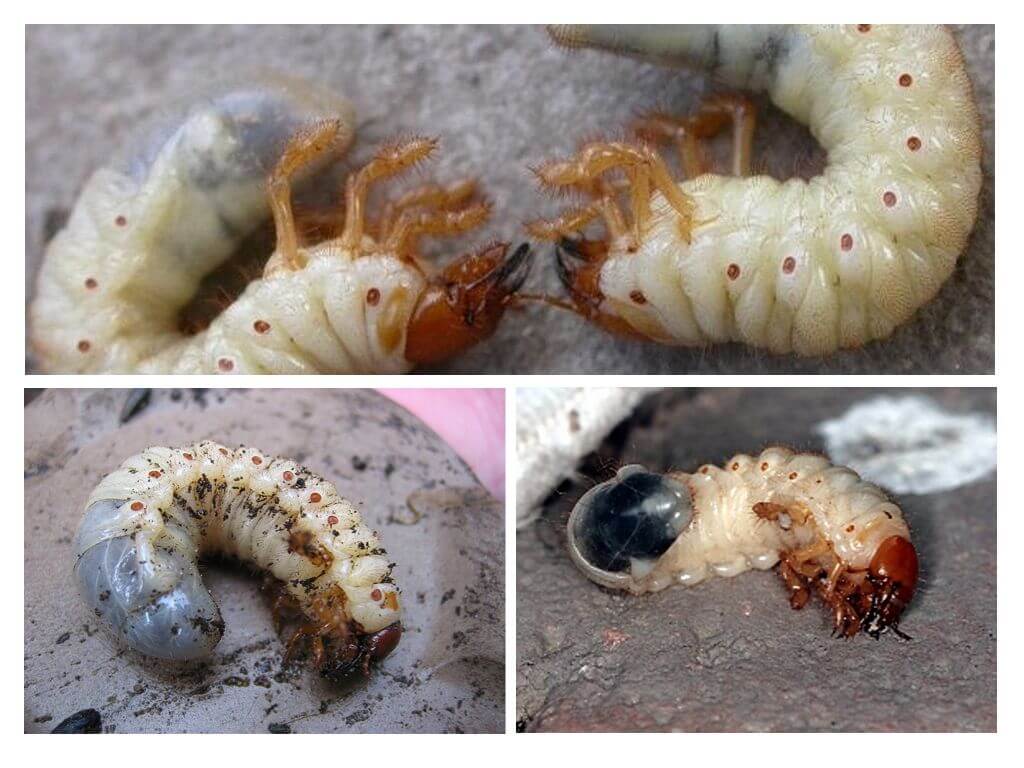
Where can larvae be found
Insects activate with the onset of heat. They hibernate in soil at a depth of about 2 m or in compost heaps. As the soil warms up in the spring, they approach the surface. The optimum temperature for them is 12 degrees.
The mating season falls on the month of May. At this time, adult individuals, young females get out of the mink in the dark, fly in search of the male. After fertilization for 2 weeks, the female bear builds a nest at different depths. In fertile, moist soil, the labyrinth with numerous passages is located at a depth of 5 cm. In sandy soil, it goes 70 cm deep. The average depth of the nest is 15–20 cm.
The female lays eggs in an amount of about 500 pieces. Such a high abundance provides the insect with survival. In order for the larva to come into the world, it is necessary to create favorable conditions - air intake, heat, high humidity.
On a note!
The difference between the larvae of the bear and the larva of the May beetle is obvious. They can not be confused. But out of ignorance, you can take a fat white worm for the calf of any insect. To determine who wound up, you should pay attention to the place where strange creatures were discovered, the depth of the nest. Larvae of the bear love heaps with manure, near the nest in the garden they destroy plants so that the light enters the hole. May beetle larvae always find themselves in a well-groomed, clean, weathered garden.
Appearance of the bear larva
Experienced gardeners know how to distinguish insect larvae; beginners have to rack their brains.
There are about 500 eggs in the nest of the bear. The length of each of them is from 1 to 3 mm. They have a brown, reddish color. Translucent. Under the microscope, you can see a living creature in them. The larva develops in the egg for about 2 weeks. Under favorable conditions, leaves the shell earlier.
Initially, these are small, helpless, blind creatures that look like a bug, but not a caterpillar. They have a reddish color. The food for them is the saliva of the mother, the shell of the egg. After about 7 days, the first molt occurs. The larvae of the bear increase in size, more resemble an adult insect, which even has wings and can fly.
The full stage of formation of imago lasts about 2 years. Under favorable conditions - 1.5 years. At the last stage, the genitals develop. The larva of the bear will have to go through about 10 links. Each time the body length increases, more and more resembles an adult beetle.
On a note!
The larva of the bear looks almost the same as an adult. She does not go through the stage of a caterpillar, pupa, does not turn into a butterfly.The body length of the larva at the initial stage is about 3 mm, at the end of formation - 5 cm. The size of an adult reaches 12 cm along with its tail and mustache. Photo below.
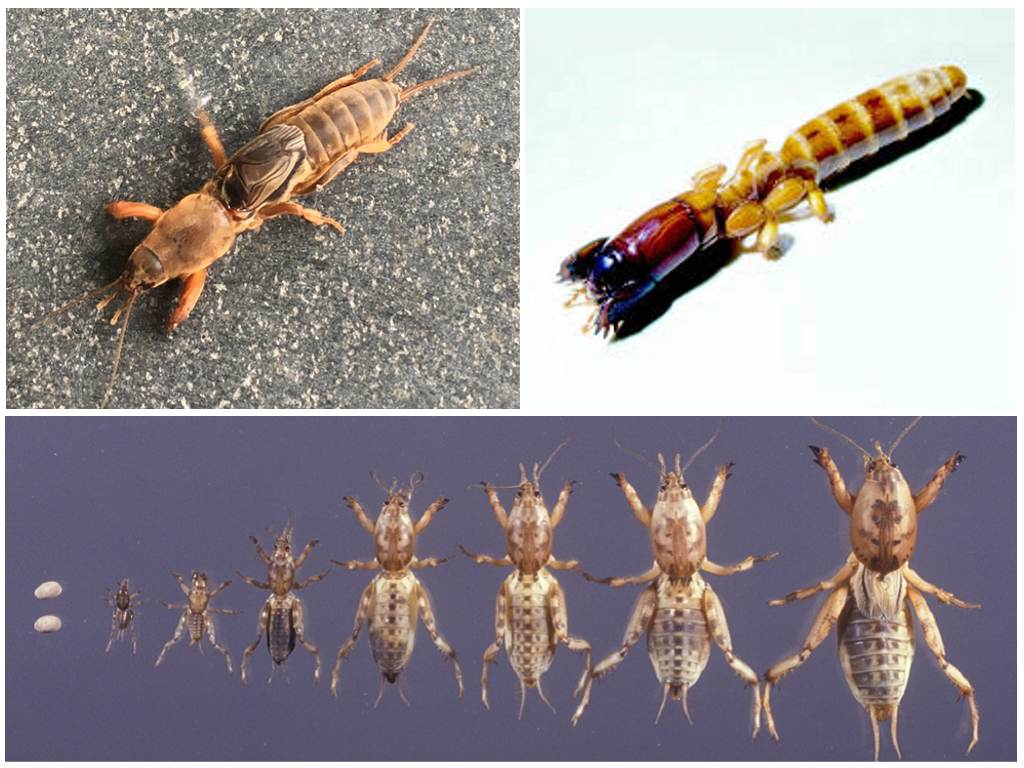
Maybug Larva
To the question of how the larvae of beetles differ, we can answer briefly - to everyone. From the very first stage of development to the last.
The process of reproduction begins in early spring, when the first leaves appear on birches. With the onset of persistent heat - in May, the female May beetle burrows deep into the soil up to 1 m. It lays a large number of white, transparent eggs.
On a note!
Medvedka rarely lays eggs at a depth of 1 m. Because for the successful development of offspring you need heat, air. The female periodically opens the entrances to receive fresh air. At a depth of 1 m, such manipulations are problematic. When digging a garden to a depth of 50 cm, there are more chances to stumble upon a nest, offspring of a bear and destroy all unborn pests.
May beetle calves are born in 20 days. In appearance - thick, white caterpillars with well-defined rings. Over time, they become larger, rise closer to the surface, eating plant roots. The development of the larva of the May beetle takes several years.
Interesting!
If we compare the larvae of two pests, we can say the following. The offspring of the bear cause damage to crops almost immediately after its birth. Therefore, gardeners use various means of struggle with them. Cubs of the May beetle are initially harmless, are not so voracious in nature.
As they grow older, the young beetle may turn into a yellowish greasy worm, a caterpillar. Head brown, without eyes, with a well-developed gnawing apparatus. In front of 3 pairs of legs. The body is translucent, the remains of food are visible in the intestines. There are brown spots on the sides of the rings. These features distinguish the chafer from other insects. It is impossible to confuse them with cubs of cabbage.
A photo of the May beetle larva and the bear larva is presented below.
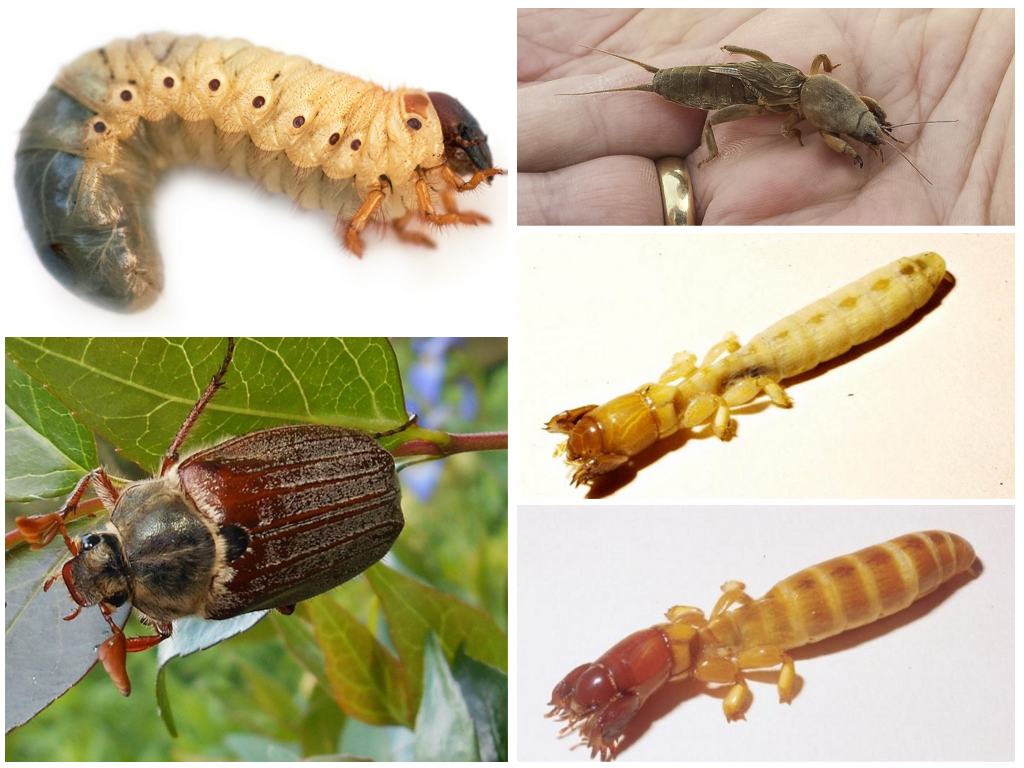
The main differences
Having become acquainted with the appearance of each insect, the features of the construction of the nest, we can distinguish the main differences:
- The bear does not go through the stage of the worm, pupa. Immediately comes into the world in the form of a small insect. It has a brown color, but darkens over time. At the last stage, wings and genitals develop. All this takes about 2 years.
- May larvae are white caterpillars with distinct rings. Gradually increase in size, reach a length of 6 cm. They have a twisted shape in a ring. The head is brown. In front of 3 pairs of legs. This is important to remember, because similar larvae are found in the larvae of other beetles that do not harm crops.
On a note!
The difference between the larvae is obvious. It should be borne in mind that the May beetle develops underground for about 3 years. The cycle continues with the onset of heat. During the first 2 years, the larva does not cause much harm, in the last year it sweeps away everything in its path, turns into a real natural disaster.
In a small amount on the land, the larvae do not cause much harm. This applies to both the bear and the may bug. They loosen the soil, saturate with useful substances. However, their large number can nullify all the efforts of the gardener.
Prevention
To protect the site from pests, it is necessary to dig the soil twice a year to a depth of 20 cm or more. In this way, you can destroy insect nests, destroy larvae.
When using natural fertilizer - manure, it is better to scatter it around the garden in the fall. Then, after the winter, there will be no viable bear eggs left in it. With the spring fertilizer procedure, a person contributes to the infection of the soil with his own efforts.
As protective agents - make beds with garlic, throw cloves into the hole with the crops, plant flower beds with calendula, marigolds, chrysanthemums.
You can fight pests with folk remedies, professional. With severe soil infection, insecticides are used (Rembek, Regent etc.), which remain valid for 1 month, disintegrate completely after 45 days. This is enough to destroy all harmful creatures.
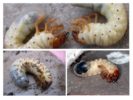
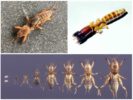
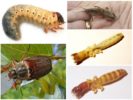
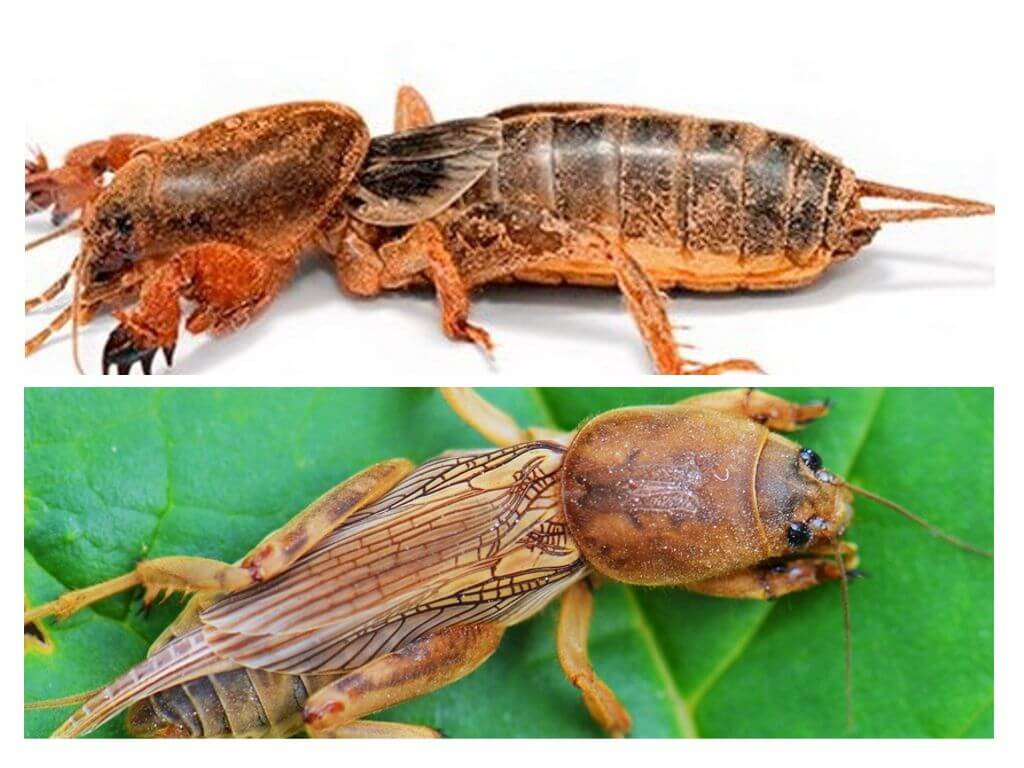
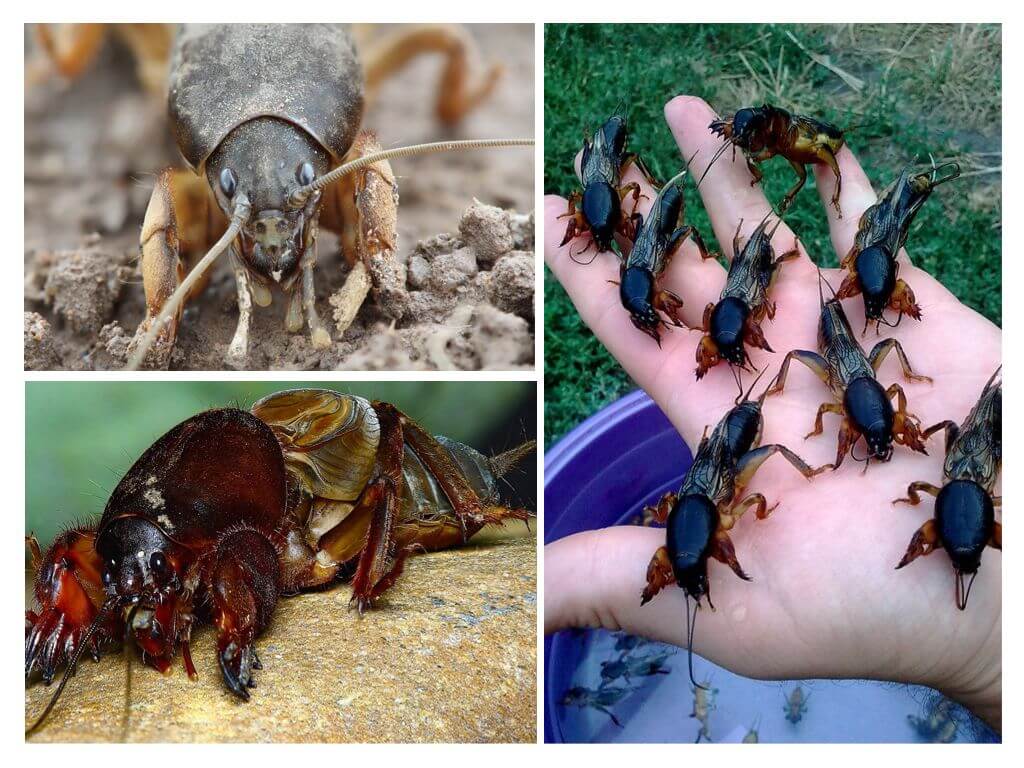
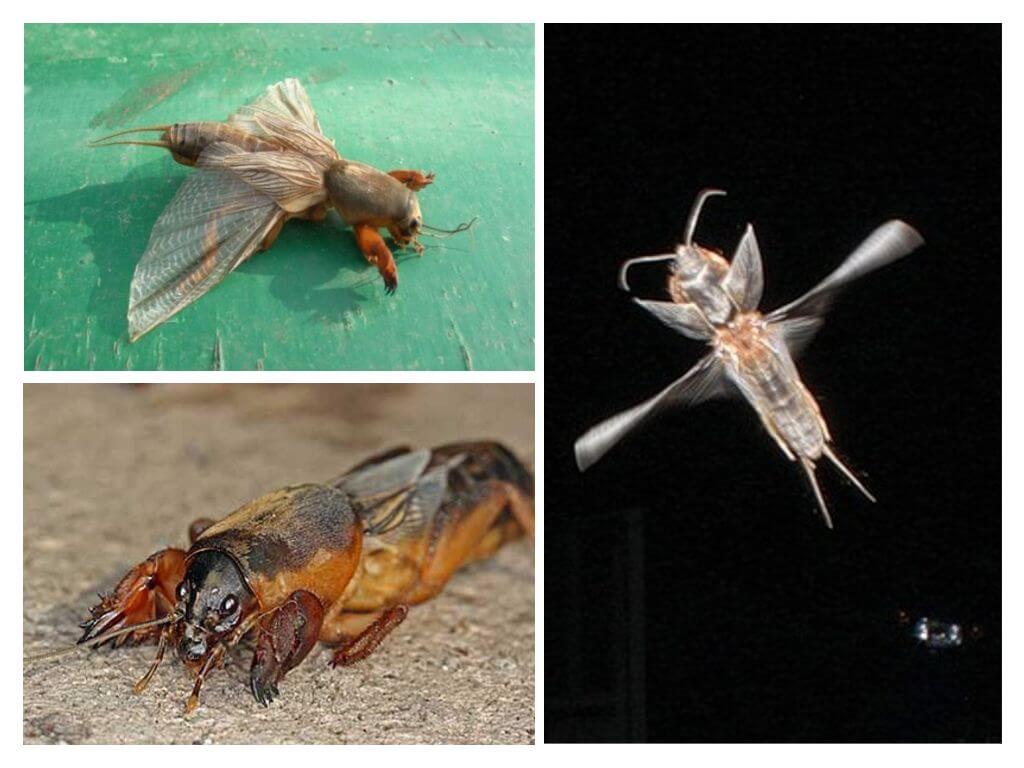
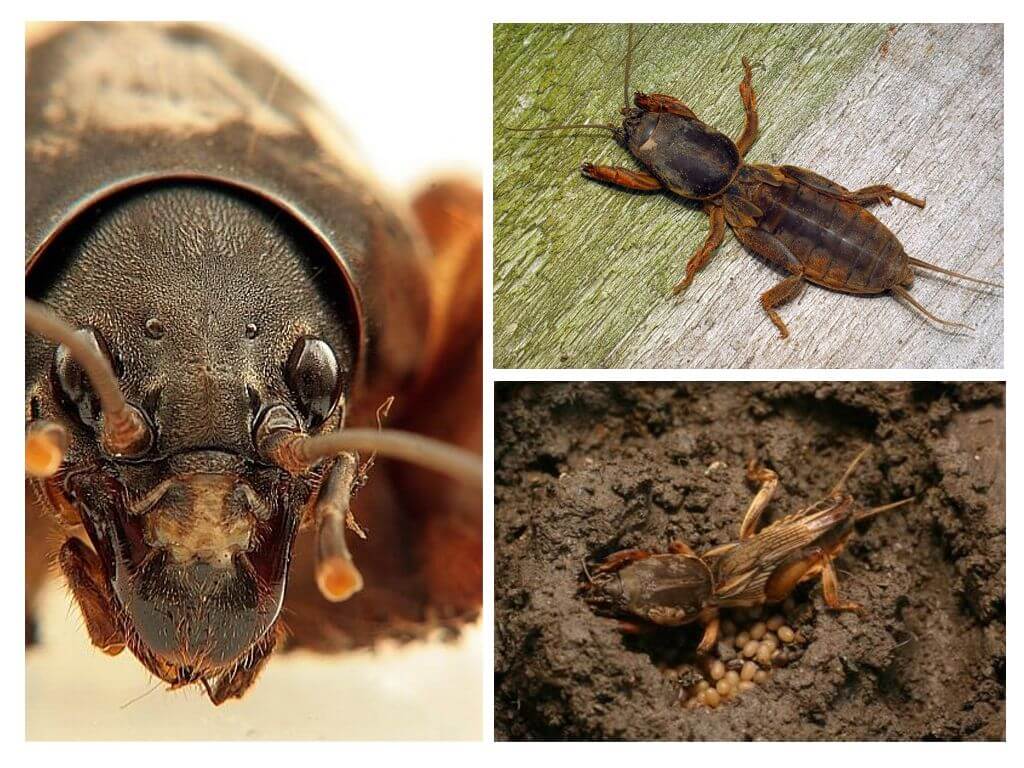
The differences are obvious. I do not understand how you can confuse the larvae of the bear with the May beetle.
In my opinion, everyone knows the larvae of the gourmet. They are studying in the 5th grade of a comprehensive school. The textbook has a photo.
Well, when something eats seedlings, does not allow seeds to sprout, you think at all. Bears are less common. Therefore, out of ignorance, you can take the larva of the May beetle for its cubs. To do this, and read the article, study the information.
Cottage bought last year, faced with a problem. Something was thrown over seedlings, the beets nibbled, the carrots spoiled. Sinned on mice, it turned out, bears. In the spring I came across fatty larvae, so I thought that they were.
I also did not know what the bear and her cub look like until I ran into a strange creature in the garden. Caught mice with banks, there it got. I began to read what is what, what to fight, what larvae. Thanks for the clarification. Now also smart.
A person will not know about all insects and their larvae until he encounters a problem. The larva of the bear is clearly different from the horsetail.
Anyway, they look like they have to destroy everyone. Only the larvae of the bear can be trapped in plastic bottles, but you will tinker with the raspberries. It is not clear where they can be. Break the whole garden to a depth of 1 m, or what?
Why take a break? You can use the poison. All larvae perish in one fell swoop. Do not have to understand the differences.
Generally, thanks for the info. I read, became smarter. Somehow, too, a dispute arose that the caterpillar bears were let into the light. It turns out, no.
It is difficult to confuse, for those who know what kind of living creatures it is. I also sinned on a bear when I met a May bug. It turned out to be much worse.